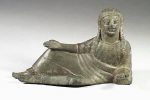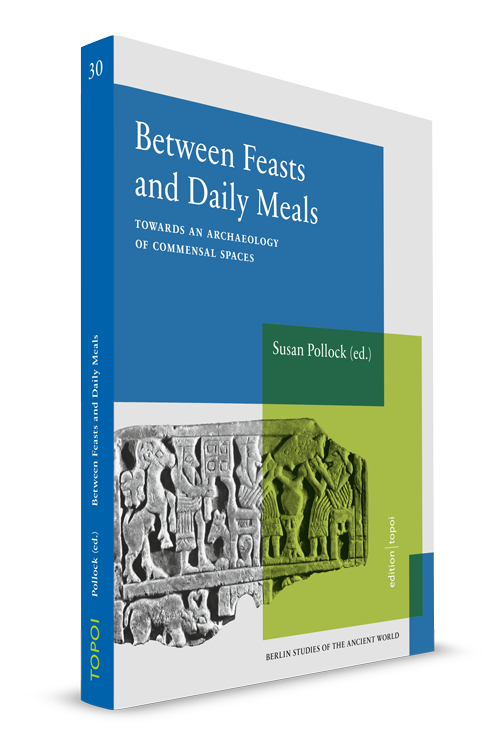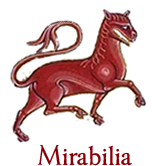| Vol. 72 |
| Collection | Wolfram Schier, Jörg Orschied, Harald Stäuble and Carmen Liebermann (Eds.), Mesolithikum oder Neolithikum? Auf den Spuren später Wildbeuter, Berlin: Edition Topoi, 2020 |
| Vol. 71 |
| Book | Lisa Römer, Camminando vedrete. Wege durch das antike Rom in der Reiseliteratur des 7. bis 16. Jahrhunderts, Berlin: Edition Topoi, 2019 |
| Vol. 70 |
| Proceedings | David Warburton and Shiyanthi Thavapalan (Eds.), Value of Colour. Material and Economic Aspects in the Ancient World, Berlin: Edition Topoi, 2020 |
| Vol. 69 |
| Collection | Rebecca Döhl and Julian Jansen van Rensburg (Eds.), Signs of Place: A Visual Interpretation of Landscape, Berlin: Edition Topoi, 2019 |
| Vol. 68 |
| Collection | Joanne Rowland, Giulio Lucarini and Geoffrey John Tassie (Eds.), Revolutions. The Neolithisation of the Mediterranean Basin, Berlin: Edition Topoi, 2020 |
| Vol. 67 |
| Book | Florian Klimscha, Ancient Glass and Glass Production, Berlin: Edition Topoi, 2020 |
| Vol. 66 |
| Book | Daniel A. Werning, Das Höhlenbuch im Grab des Petamenophis (TT33). Szenen, Texte, Wandtafeln, Berlin: Edition Topoi, 2019 |
| Vol. 65 |
| Proceedings | Ricardo Eichmann, Mark Howell and Graeme Lawson (Eds.), Music and Politics in the Ancient World. Exploring Identity, Agency, Stability and Change through the Records of Music Archaeology, Berlin: Edition Topoi, 2019 |
| Vol. 64 |
| Collection | Michael Meyer (Ed.), Approaching Economic Spaces. Methods and Interpretation in Archaeometric Ceramic Analysis, Berlin: Edition Topoi, 2020 |
| Vol. 63 |
| Book | Bernhard Fritsch, Die Dekonstruktion antiker Räume und die Spolienverwertung beim Neubau von St. Peter in Rom, Berlin: Edition Topoi, 2018 |
| Vol. 62 |
| Book | Enrico Lehnhardt, Die Anfänge der Eisenverhüttung im Bereich der Przeworsk-Kultur, Berlin: Edition Topoi, 2019 |
| Vol. 61 |
| Collection | Orly Lewis, David Leith and Sean Coughlin (Eds.), The Concept of Pneuma after Aristotle, Berlin: Edition Topoi, 2020 |
| Vol. 60 |
| Collection | Chiara Ferella and Cilliers Breytenbach (Eds.), Paths of Knowledge. Interconnection(s) between Knowledge and Journey in the Greco-Roman World, Berlin: Edition Topoi, 2018 |
| Vol. 59 |
| Collection | Markus Hilgert, Henrike Simon and Kerstin P. Hofmann (Eds.), Objektepistemologien. Zur Vermessung eines transdisziplinären Forschungsraums, Berlin: Edition Topoi, 2018 |
| Vol. 58 |
| Proceedings | Ulrich Mania and Monika Trümper (Eds.), Development of Gymnasia and Graeco-Roman Cityscapes, Berlin: Edition Topoi, 2018 |
| Vol. 57 |
| Collection | Verena Olejniczak Lobsien, Bernd Roling, Lutz Bergemann and Bettina Bohle (Eds.), Vom Seelengefährt zum Glorienleib. Formen aitherischer Leiblichkeit, Berlin: Edition Topoi, 2018 |
| Vol. 56 |
| Book | Oliver Nakoinz, Zentralität. Theorie, Methoden und Fallbeispiele zur Analyse zentraler Orte, Berlin: Edition Topoi, 2019 |
| Vol. 55 |
| Collection | Susanne Grunwald, Kerstin P. Hofmann, Daniel A. Werning and Felix Wiedemann (Eds.), Mapping Ancient Identities. Methodisch-kritische Reflexionen zu Kartierungspraktiken, Berlin: Edition Topoi, 2018 |
| Vol. 54 |
| Book | Petra Wodtke, Dies ist kein römisches Objekt. Ein archäologisch-semiotischer Zugang zur materiellen Kultur der römischen Provinz Epirus, Berlin: Edition Topoi, 2018 |
| Vol. 53 |
| Collection | Jonas Berking (Ed.), Water Management in Ancient Civilizations, Berlin: Edition Topoi, 2018 |
| Vol. 52 |
| Book | Stefan Schreiber, Wandernde Dinge als Assemblagen. Neo-Materialistische Perspektiven zum ‚römischen Import‘ im ‚mitteldeutschen Barbaricum‘, Berlin: Edition Topoi, 2018 |
| Vol. 51 |
| Book | Olivier Defaux, The Iberian Peninsula in Ptolemy’s Geography. Origins of the Coordinates and Textual History, Berlin: Edition Topoi, 2017 |
| Vol. 50 |
| Collection | Michael Meyer, Piotr Łuczkiewicz and Björn Rauchfuß (Eds.), Eisenzeitliche Siedlungskeramik der Przeworsk-Kultur / Ceramika osadowa kulturyprzeworskiej z młodszego okresuprzedrzymskiego, Berlin: Edition Topoi, 2017 |
| Vol. 49 |
| Collection | Ute Luig (Ed.), Approaching the Sacred. Pilgrimage in historical and intercultural perspective, Berlin: Edition Topoi, 2018 |
| Vol. 48 |
| Book | Sebastian Fischer, Raumrelationen. Die Lokalkasus im Hurritischen, Berlin: Edition Topoi, 2018 |
| Vol. 47 |
| Collection | Ines Beilke-Voigt and Oliver Nakoinz (Eds.), Enge Nachbarn. Das Problem von Doppelburgen und Mehrfachburgen in der Bronzezeit und im Mittelalter, Berlin: Edition Topoi, 2017 |
| Vol. 46 |
| Book | Stefanie Kühn, Neue Untersuchungen zur Pythaïs-Prozession von Athen nach Delphi, Berlin: Edition Topoi, 2018 |
| Vol. 45 |
| Collection | Reinhard Bernbeck, Kerstin P. Hofmann and Ulrike Sommer (Eds.), Between Memory Sites and Memory Networks. New Archaeological and Historical Perspectives, Berlin: Edition Topoi, 2017 |
| Vol. 44 |
| Collection | John Steele and Mathieu Ossendrijver (Eds.), Studies on the Ancient Exact Sciences in Honour of Lis Brack-Bernsen, Berlin: Edition Topoi, 2017 |
| Vol. 43 |
| Collection | Stefan Burmeister and Reinhard Bernbeck (Eds.), The Interplay of People and Technologies. Archaeological Case Studies on Innovation, Berlin: Edition Topoi, 2017 |
| Vol. 42 |
| Book | Sven Greinke, Landschaft und Stadt als literarisierte Räume in den Panegyrici Latini der Tetrarchie, Berlin: Edition Topoi, 2017 |
| Vol. 41 |
| Collection | Felix Wiedemann, Kerstin P. Hofmann and Hans-Joachim Gehrke (Eds.), Vom Wandern der Völker. Migrationserzählungen in den Altertumswissenschaften, Berlin: Edition Topoi, 2017 |
| Vol. 40 |
| Collection | Stefan Altekamp, Carmen Marcks-Jacobs and Peter Seiler (Eds.), Perspektiven der Spolienforschung 2. Zentren und Konjunkturen der Spoliierung, Berlin: Edition Topoi, 2017 |
| Vol. 39 |
| Proceedings | Fabian Horn and Cilliers Breytenbach (Eds.), Spatial Metaphors. Ancient Texts and Transformations, Berlin: Edition Topoi, 2016 |
| Vol. 38 |
| Proceedings | Svend Hansen, Daniel Neumann and Tilmann Vachta (Eds.), Raum, Gabe und Erinnerung. Weihgaben und Heiligtümer in prähistorischen und antiken Gesellschaften, Berlin: Edition Topoi, 2016 |
| Vol. 37 |
| Book | Elke Kaiser, Das dritte Jahrtausend im osteuropäischen Steppenraum. Kulturhistorische Studien zu prähistorischer Subsistenzwirtschaft und Interaktion mit benachbarten Räumen, Berlin: Edition Topoi, 2019 |
| Vol. 36 |
| Book | Axel Schäfer, Die Spur des Heiligen. Raum, Ritual und die Feier des Santiago in den südlichen zentralen Anden, Berlin: Edition Topoi, 2016 |
| Vol. 35 |
| Proceedings | Barbara Armbruster, Heidemarie Eilbracht, Oliver Hahn and Orsolya Heinrich-Tamáska (Eds.), Verborgenes Wissen. Innovation und Transformation feinschmiedetechnischer Entwicklungen im diachronen Vergleich, Berlin: Edition Topoi, 2016 |
| Vol. 34 |
| Proceedings | Undine Lieberwirth and Irmela Herzog (Eds.), 3D-Anwendungen in der Archäologie. Computeranwendungen und quantitative Methoden in der Archäologie. Workshop der AG CAA und des Exzellenzclusters Topoi 2013, Berlin: Edition Topoi, 2016 |
| Vol. 33 |
| Book | Tilmann Vachta, Bronzezeitliche Hortfunde und ihre Fundorte in Böhmen, Berlin: Edition Topoi, 2016 |
| Vol. 32 |
| Proceedings | Gisela Eberhardt and Fabian Link (Eds.), Historiographical Approaches to Past Archaeological Research, Berlin: Edition Topoi, 2015 |
| Vol. 31 |
| Proceedings | Ernst Baltrusch and Julia Wilker (Eds.), Amici - socii - clientes? Abhängige Herrschaft im Imperium Romanum, Berlin: Edition Topoi, 2015 |
| Vol. 30 |
| Proceedings | Susan Pollock (Ed.), Between Feasts and Daily Meals. Towards an Archaeology of Commensal Spaces, Berlin: Edition Topoi, 2015 |
| Vol. 29 |
| Collection | Almut-Barbara Renger and Isabel Toral-Niehoff (Eds.), Genealogie und Migrationsmythen im antiken Mittelmeerraum und auf der arabischen Halbinsel, Berlin: Edition Topoi, 2014 |
| Vol. 28 |
| Book | Anton Gass, Das Siebenstromland zwischen Bronze- und Früheisenzeit. Eine Regionalstudie, 2016 |
| Vol. 27 |
| Proceedings | Ute Kelp and Olivier Henry (Eds.), Tumulus as Sema. Space, Politics, Culture and Religion in the First Millenium BC, Berlin, Boston: De Gruyter, 2016 |
| Vol. 26 |
| Book | Daniel Neumann, Landschaften der Ritualisierung. Die Fundplätze kupfer- und bronzezeitlicher Metalldeponierungen zwischen Donau und Po, Berlin, Boston: De Gruyter, 2015 |
| Vol. 25 |
| Book | Claudia Gerling, Prehistoric Mobility and Diet in the West Eurasian Steppes 3500 to 300 BC. An isotopic Approach, Berlin, Boston: De Gruyter, 2015 |
| Vol. 24 |
| Book | Manfred Woidich, Die westliche Kugelamphorenkultur. Untersuchungen zu ihrer raumzeitlichen Differenzierung, kulturellen und anthropologischen Identität, Berlin, Boston: De Gruyter, 2014 |
| Vol. 23 |
| Proceedings | Silvia Polla and Philip Verhagen (Eds.), Computational Approaches to the Study of Movement in Archaeology. Theory, Practice and Interpretation of Factors and Effects of Long Term Landscape Formation and Transformation, Berlin, Boston: De Gruyter, 2014 |
| Vol. 22 |
| Proceedings | Klaus Corcilius and Dominik Perler (Eds.), Partitioning the Soul. Debates from Plato to Leibniz, Berlin, Boston: De Gruyter, 2014 |
| Vol. 21 |
| Book | Jan Moje, Herrschaftsräume und Herrschaftswissen ägyptischer Lokalregenten. Soziokulturelle Interaktionen zur Machtkonsolidierung vom 8. bis zum 4. Jahrhundert v. Chr, Berlin, Boston: De Gruyter, 2013 |
| Vol. 20 |
| Book | Cyril Brosch, Untersuchungen zur hethitischen Raumgrammatik, Berlin, Boston: De Gruyter, 2014 |
| Vol. 19 |
| Collection | Silvia Kutscher and Daniel A. Werning (Eds.), On Ancient Grammars of Space. Linguistic Research on the Expression of Spatial Relations and Motion in Ancient Languages, Berlin, Boston: De Gruyter, 2014 |
| Vol. 18 |
| Collection | Eleftheria Paliou, Undine Lieberwirth and Silvia Polla (Eds.), Spatial analysis and social spaces. Interdisciplinary approaches to the interpretation of prehistoric and historic built environments, Berlin, Boston: De Gruyter, 2014 |
| Vol. 17 |
| Collection | Eva Cancik-Kirschbaum, Nicole Brisch and Jesper Eidem (Eds.), Constituent, Confederate, and Conquered Space in Upper Mesopotamia. The Emergence of the Mittani State, Berlin, Boston: De Gruyter, 2014 |
| Vol. 16 |
| Proceedings | Svend Hansen and Michael Meyer (Eds.), Parallele Raumkonzepte, Berlin, Boston: De Gruyter, 2013 |
| Vol. 15 |
| Proceedings | Stefan Altekamp, Carmen Marcks-Jacobs and Peter Seiler (Eds.), Perspektiven der Spolienforschung 1. Spoliierung und Transposition, Berlin, Boston: De Gruyter, 2013 |
| Vol. 14 |
| Proceedings | Klaus Geus and Michael Rathmann (Eds.), Vermessung der Oikumene, Berlin, Boston: De Gruyter, 2013 |
| Vol. 13 |
| Collection | Cosima Möller and Eberhard Knobloch (Eds.), In den Gefilden der römischen Feldmesser. Juristische, wissenschaftsgeschichtliche, historische und sprachliche Aspekte, Berlin, Boston: De Gruyter, 2013 |
| Vol. 12 |
| Proceedings | Dominik Bonatz (Ed.), The Archaeology of Political Spaces. The Upper Mesopotamian Piedmont in the Second Millennium BC, Berlin, Boston: De Gruyter, 2014 |
| Vol. 11 |
| Proceedings | Ortwin Dally, Susanne Moraw and Hauke Ziemssen (Eds.), Bild – Raum – Handlung. Perspektiven der Archäologie, Berlin, Boston: De Gruyter, 2012 |
| Vol. 10 |
| Proceedings | Svend Hansen, Daniel Neumann and Tilmann Vachta (Eds.), Hort und Raum. Aktuelle Forschungen zu bronzezeitlichen Deponierungen in Mitteleuropa, Berlin, Boston: De Gruyter, 2012 |
| Vol. 9 |
| Proceedings | Elke Kaiser and Wolfram Schier (Eds.), Mobilität und Wissenstransfer in diachroner und interdisziplinärer Perspektive, Berlin, Boston: De Gruyter, 2013 |
| Vol. 8 |
| Book | Salvatore De Vincenzo, Tra Cartagine e Roma, Berlin, Boston: De Gruyter, 2012 |
| Vol. 7 |
| Collection | Ernst Baltrusch, Morten Hegewisch, Michael Meyer, Uwe Puschner and Christian Wendt (Eds.), 2000 Jahre Varusschlacht. Geschichte-Archäologie-Legenden, Berlin, Boston: De Gruyter, 2012 |
| Vol. 6 |
| Proceedings | Felix Mundt (Ed.), Kommunikationsräume im kaiserzeitlichen Rom, Berlin, Boston: De Gruyter, 2012 |
| Vol. 5 |
| Proceedings | Elke Kaiser, Joachim Burger and Wolfram Schier (Eds.), Population Dynamics in Prehistory and Early History. New Approaches by Using Stable Isotopes and Genetics, Berlin, Boston: De Gruyter, 2012 |
| Vol. 4 |
| Proceedings | Therese Fuhrer (Ed.), Rom und Mailand in der Spätantike. Repräsentationen städtischer Räume in Literatur, Architektur und Kunst, Berlin, Boston: De Gruyter, 2011 |
| Vol. 3 |
| Collection | Frank Daubner (Ed.), Militärsiedlungen und Territorialherrschaft in der Antike, Berlin, Boston: De Gruyter, 2010 |
| Vol. 2 |
| Book | Alessandra Gilibert, Syro-Hittite Monumental Art and the Archaeology of Performance, Berlin, Boston: De Gruyter, 2011 |
| Vol. 1 |
| Proceedings | Eva Cancik-Kirschbaum, Margarete van Ess and Joachim Marzahn (Eds.), Babylon. Wissenskultur in Orient und Okzident/ Science Culture Between Orient and Occident, Berlin, Boston: De Gruyter, 2011 |






































































 Pompée, les Italiens et le Sénat (de 62 à 49 av. J.-C.)
Pompée, les Italiens et le Sénat (de 62 à 49 av. J.-C.)